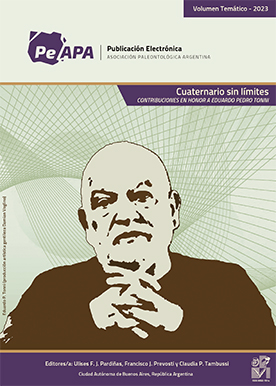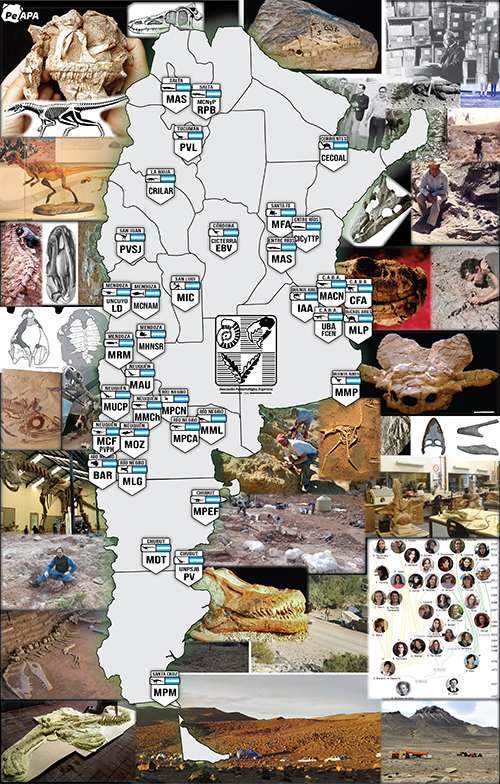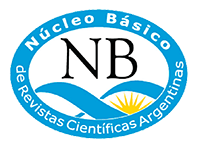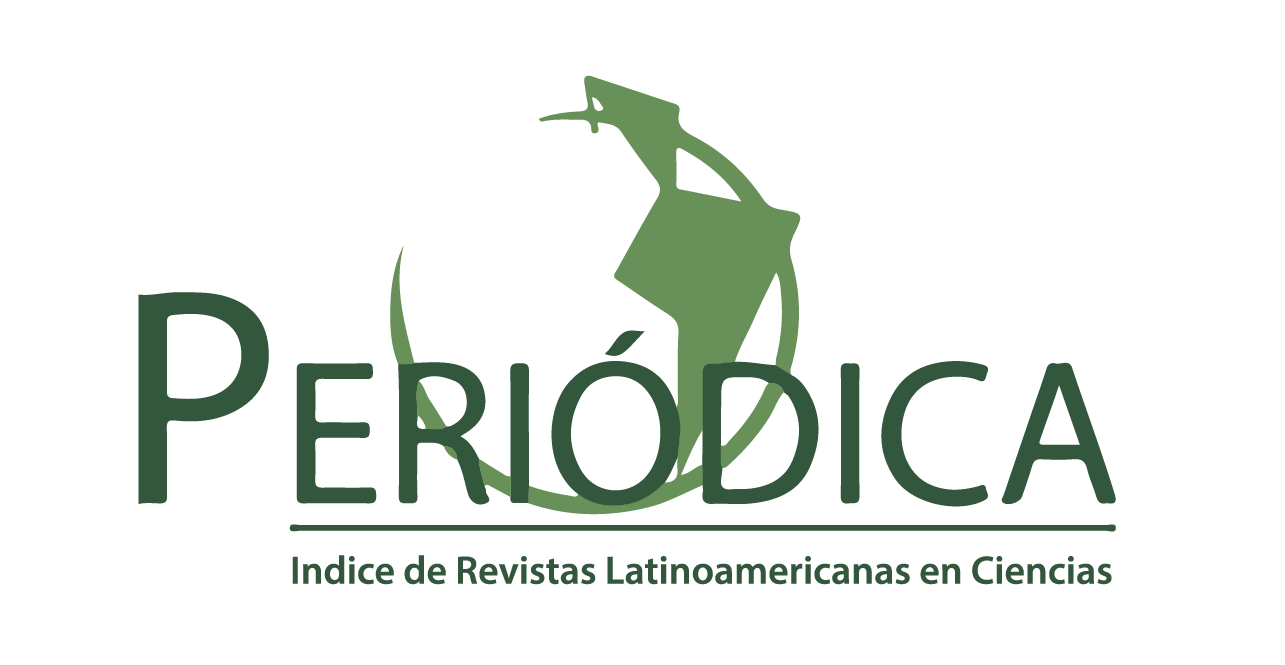OSTEOLOGÍA CRANEANA Y TAXONOMÍA DE PRONOTHROTHERIUM (XENARTHRA, FOLIVORA, NOTHROTHERIIDAE) DEL MIOCENO TARDÍO–PLIOCENO TEMPRANO DE LA PROVINCIA DE CATAMARCA (ARGENTINA)
DOI:
https://doi.org/10.5710/PEAPA.04.09.2020.320Palabras clave:
Xenartros, Perezosos, Pronothrotherium, Cráneo, TaxonomíaResumen
Pronothrotherium typicum es un perezoso notrotérido del Mioceno tardío–Plioceno temprano (Edades Mamífero Huayqueriense–Chapadmalense) de la provincia de Catamarca, noroeste de Argentina. Pronothrotherium es uno de los cuatro géneros de notroterinos cuyos esqueletos son relativamente completos, pero a diferencia de los otros tres, su anatomía no ha sido formalmente descripta. El presente estudio proporciona las primeras descripciones e ilustraciones de la anatomía craneana de Pronothrotherium, basadas principalmente en un cráneo casi completo de un subadulto y un fragmento de cráneo de un adulto de P. typicum, depositados en las colecciones del Field Museum (Chicago, Illinois, USA). Se provee también una revisión de la diagnosis de P. typicum basada en caracteres craneanos. El cráneo de esta especie muestra una serie de características específicas, como una marcada quilla del vómer en la región nasofaríngea que termina en una protuberancia globosa, que representaría una característica única dentro de los mamíferos. Sobre la base del presente estudio se reconocen dos especies contemporáneas del género Pronothrotherium, P. typicum y P. mirabilis, aunque la segunda es más dudosa. No se acepta la validez de una tercera especie anteriormente descripta, P. figueirasi, que es considerada como sinónimo de P. mirabilis. Este estudio no se propone resolver las relaciones filogenéticas inciertas entre los notroterinos más conocidos Pronothrotherium, Mionothropus (Mioceno tardío) y los dos géneros de Nothrotheriini pleistocenos, Nothrotherium y Nothrotheriops. Sin embargo, esperamos que los datos proporcionados faciliten futuros estudios que abarquen estas cuestiones.
Citas
Ameghino, F. (1907). Notas sobre una pequeña colección de huesos de mamíferos procedentes de las grutas calcáreas de Iporanga en el estado de São Paulo, Brazil. Revista do Museu Paulista, 7, 59–124.
Amson, E., Muizon, C. de, & Gaudin, T. J. (2017). A reappraisal of the phylogeny of the Megatheria (Mammalia, Tardigrada), with an emphasis on the relationships of the Thalassocninae, the marine sloths. Zoological Journal of the Linnean Society, 179, 217–236.
Bargo, M. S., De Iuliis, G., & Toledo, N. (2019). Early Miocene sloths (Xenarthra, Folivora) from the Río Santa Cruz valley (Southern Patagonia, Argentina). Ameghino, 1887 revisited. Publicación Electrónica de la Asociación Paleontológica Argentina, 19, 102–137.
Bargo, M. S., Vizcaíno, S. F., & Kay, R. F. (2009). Predominance of orthal masticatory movements in the Early Miocene Eucholaeops (Mammalia, Xenarthra, Tardigrada, Megalonychidae) and other megatherioid sloths. Journal of Vertebrate Paleontology, 29, 870–880.
Billet, G., Hautier, L., Asher, R. J., Schwarz, C., Crumpton, N., Martin, T., & Ruf, I. (2012). High morphological variation of vestibular system accompanies slow and infrequent locomotion in threetoed sloths. Proceedings of the Royal Society B, 279, 3932–3939.
Bonini, R. A., Georgieff, S. M., & Candela, A. M. (2017). Stratigraphy, geochronology, and paleoenvironments of Miocene–Pliocene boundary of San Fernando, Belén (Catamarca, northwest of Argentina). Journal of South American Earth Sciences, 79, 459–471.
Boscaini, A., Gaudin, T. J., Mamani-Quispe, B., Münch, P., Antoine, P.-O., & Pujos, F. (2018a). New well-preserved craniodental remains of Simomylodon uccasamamensis (Xenarthra, Mylodontidae) from the Pliocene of the Bolivian Altiplano: phylogenetic, chronostratigraphic, and paleobiogeographical implications. Zoological Journal of the Linnean Society, 185, 459–486.
Boscaini, A., Iurino, D. A., Billet, G., Hautier, L., Sardella, R., Tirao, G., Gaudin, T. J., & Pujos, F. (2018b). Phylogenetic and functional implications of the ear region anatomy of Glossotherium robustum (Xenarthra, Mylodontidae) from the late Pleistocene of Argentina. The Science of Nature [Naturwissenschaften], 105, 28. https://doi.org/ 10.1007/s00114-018-1548-y
Boscaini, A., Iurino, D. A., Mamani Quispe, B., Andrade Flores, R., Sardella, R., Pujos, F., & Gaudin, T. J. (2020a). Cranial anatomy and paleoneurology of the extinct sloth Catonyx tarijensis (Xenarthra, Mylodontidae) from the late Pleistocene of Oruro, Southwestern Bolivia. Frontiers in Ecology and Evolution, 8, 1–16.
Boscaini, A., Iurino, D. A., Sardella, R., Tirao, G., Gaudin, T. J., & Pujos, F. (2020b). Digital cranial endocasts of the extinct sloth Glossotherium robustum (Xenarthra, Mylodontidae) from the late Pleistocene of Argentina: description and comparison with the extant sloths. Journal of Mammalian Evolution, 27, 55–71.
Boscaini, A., Pujos, F., & Gaudin, T. J. (2019). A reappraisal of the phylogeny of Mylodontidae (Mammalia, Xenarthra) and the divergence of mylodontine and lestodontine sloths. Zoologica Scripta, 48, 691–710.
Brandoni, D. (2013). Los Tardigrada (Mammalia, Xenarthra) del Miocene tardío de Entre Ríos, Argentina. In D. Brandoni and J. I. Noriega (Eds.), El Neógeno de la Mesopotamia argentina. Asociación Paleontológica Argentina, Publicación Especial14, 135–144.
Brandoni, D., & McDonald, H. G. (2015). An enigmatic Nothrotheriinae (Xenarthra, Tardigrada) from the Pleistocene of Argentina. Ameghiniana, 52, 294–302.
Brandoni, D., & Vezzosi, R. I. (2019). Nothrotheriops sp. (Mammalia, Xenarthra) from the Late Pleistocene of Argentina: implications for the dispersion of ground sloths during the Great American Biotic Interchange. Boreas, 48, 879–890.
Burmeister, G. (1882). Nothropus priscus, ein bisher unbekanntes fossiles Faulthier. Sitzungsberichte der (Königlich-preussischen) Akademie der Wissenschaftenzu, Berlin, 1882, 613–620.
Cartelle, C. (2012). Das Grutas À Luz: Os Mamíferos Pleistocênicos de Minas Gerais. Belo Horizonte, Brazil: Bicho do Mato Editora, 1ª edição.
Cartelle, C., & Fonseca J. S. (1983). Contribuição ao melhor conhecimento da pequena preguiça terrícola Nothrotherium maquinense (Lund) Lydekker, 1989. Lundiana, 2, 127–181.
Cartelle, C., & Bohórquez, G. A. (1986). Descrição das pré-maxilas de Nothrotherium maquinense (Lund) Lydekker, 1889 (Edentata, Megalonychidae) e de Eremotherium laurillardi (Lund) Cartelle et Bohórquez, 1982 (Edentata, Megatheriidae). Iheringia Séries Geológica, 11, 9–14.
De Iuliis, G. (1994). Relationships of the Megatheriidae, Nothrotheriinae and Planopsinae: some skeletal characteristics and their importance for phylogeny. Journal of Vertebrate Paleontology, 14, 577–591.
De Iuliis, G. (2018). Recent progress and future prospects in fossil xenarthran studies, with emphasis on current methodology in sloth taxonomy. Journal of Mammalian Evolution, 25, 449–458.
De Iuliis, G., Gaudin, T. J., & Vicars, M. P. (2011). A new genus and species of nothrotheriid sloth (Xenarthra, Tardigrada, Nothrotheriidae) from the late Miocene (Huayquerian) of Peru. Palaeontology, 54, 171–205.
De Iuliis, G., McDonald, H. G., Stanchly, N., Spenard, J., & Powis, T. G. (2015). Nothrotheriops shastensis (Sinclair) from Actun Lak: first record of Nothrotheriidae (Mammalia, Xenarthra, Pilosa) from Belize. Ameghiniana, 52, 153–171.
De Iuliis, G., Pujos, F., Toledo, N., Bargo, M. S., & Vizcaíno, S. F. (2014). Eucholoeops Ameghino, 1887 (Xenarthra, Tardigrada, Megalonychidae) from the Santa Cruz Formation, Argentine Patagonia: implications for the systematics of Santacrucian sloths. Geodiversitas, 36, 209–255.
Delsuc, F., Kuch, M., Gibb, G. C., Karpinski, E., Hackenberger, D., Szpak, P., Martínez, J. G., Mead, J. I., McDonald, H. G., MacPhee, R. D. E., Billet, G., Hautier, L., & Poinar, H. N. (2019). Ancient mitogenomes reveal the evolutionary history and biogeography of sloths. Current Biology, 29, 1–12.
Edmund, G. (1985). The fossil giant armadillos of North America (Pampatheriinae, Xenarthra = Edentata). In G. G. Montgomery (Ed.), The Ecology and Evolution of Armadillos, Sloths, and Vermilinguas (pp. 83–93). Smithsonian Institution Press, Washington, D.C.
Engelmann, G. (1985). The phylogeny of the Xenarthra. In G. G. Montgomery (Ed.), The Ecology and Evolution of Armadillos, Sloths, and Vermilinguas (pp. 51–64). Smithsonian Institution Press, Washington, D.C.
Esteban, G., Nasif, N., & Georgieff, S. (2014). Cronobioestratigrafía del Mioceno tardío–Plioceno temprano, Puerta de Corral Quemado y Villavil, Provincia de Catamarca, Argentina. Acta Geologica Lilloana, 26, 165–192.
Evans, H. E., & Christensen G. C. (1979). Miller’s Anatomy of the Dog. W.B. Saunders Co., Philadelphia.
Ferigolo, J. (1985). Evolutionary trends of the histological pattern in the teeth of Edentata (Xenarthra). Archives of Oral Biology, 30, 71–82.
Frailey, C. D. (1986). Late Miocene and Holocene mammals, exclusive of the Notoungulata, of the Río Acre region, western Amazonia. Contributions in Science, Natural History Museum of Los Angeles County, 374, 1–74.
Gaudin, T. J. (1995). The ear region of edentates and the phylogeny of the Tardigrada (Mammalia, Xenarthra). Journal of Vertebrate Paleontology, 15, 672–705.
Gaudin, T. J. (2004). Phylogenetic relationships among sloths (Mammalia, Xenarthra, Tardigrada): the craniodental evidence. Zoological Journal of the Linnean Society, 140, 255–305.
Gaudin, T. J. (2011). On the osteology of the auditory region and orbital wall in the extinct West Indian sloth genus Neocnus (Megalonychidae, Xenarthra, Placentalia). Annals of the Carnegie Museum of Natural History, 80, 5–28.
Gaudin, T. J., De Iuliis, G., Toledo, N., & Pujos, F. (2015). The basicranium and orbital region of the early Miocene Eucholoeops ingens Ameghino, 1887 (Xenarthra, Pilosa, Megalonychidae). Ameghiniana, 52, 226–240.
Gaudin, T. J., & Lyon, L. M. (2017). Cranial osteology of the pampathere Holmesina floridanus (Xenarthra: Cingulata; Blancan NALMA), including a description of an isolated petrosal bone. PeerJ, 5, e4022, 73 pp. DOI 10.7717/peerj.4022
Gaudin, T. J., Wible, J. R., Hopson, J. A., & Turnbull, W. D. (1996). Reexamination of the morphological evidence for the Cohort Epitheria (Mammalia, Eutheria). Journal of Mammalian Evolution, 3, 31–79.
Guth, C. (1961). La région temporale des Édentés. [Ph. D. Dissertation, Université de Paris, Paris].
Hautier, L., Billet, G., Eastwood, B., & Lane, J. (2014). Patterns of morphological variation of extant sloth skulls and their implication for future conservation efforts. The Anatomical Record, 297, 979–1008.
Kalthoff, D. C. (2011). Microstructure of dental hard tissues in fossil and recent xenarthrans (Mammalia: Folivora and Cingulata). Journal of Morphology, 272, 641–661.
Kraglievich, L. (1925). Un nuevo eslabón en la serie filogenética de la subfamilia Nothrotheriinae: Senetia mirabilis. Anales del Museo de Historia Natural de Buenos Aires, 33, 177–193.
Kraglievich, L. (1926). Presencia del género “Nothrotherium” Lydek. (= “Coelodon” Lund) en la fauna pampeana “Nothrotherium torresi”, n. sp. Revista del Museo de La Plata, 29, 169–186.
Lull, R. S. (1929). A remarkable ground sloth. Memoirs of the Peabody Museum of Yale University, 3, 1–39.
Marshall, L. G., & Patterson, B. (1981). Geology and geochronology of the mammal-bearing Tertiary of the Valle de Santa María and Río Corral Quemado, Catamarca Province, Argentina. Fieldiana Geology, 9, 1–80.
McAfee, R. K., & Naples, V. L. (2012). Notice on the occurrence of supernumerary teeth in the two-toed sloths Choloepus didactylus and C. hoffmanni. Mastozoología Neotropical, 19, 339–344.
McDonald, H. G., & De Iuliis, G. (2008). Fossil history of sloths. In S. F. Vizcaíno, & W. J. Loughry (Eds.), The Biology of the Xenarthra (pp. 39–55). Gainesville, University of Florida Press, Gainesville.
McDonald, H. G., & Muizon, C. de (2002). The cranial anatomy of Thalassocnus (Xenarthra, Mammalia), a derived nothrothere from the Neocene of the Pisco Formation (Peru). Journal of Vertebrate Paleontology, 22, 349–365.
Muizon, C. de, & McDonald, H. G. (1995). An aquatic sloth from the Pliocene of Peru. Nature, 375, 224–227.
Muizon, C. de, McDonald, H. G., Salas, R., & Urbina, M. (2003). A new early species of the aquatic sloth Thalassocnus (Mammalia, Xenarthra) from the late Miocene of Peru. Journal of Vertebrate Paleontology, 23, 886–894.
Muizon, C. de, McDonald, H. G., Salas, R., & Urbina, M. (2004). The youngest species of the aquatic sloth Thalassocnus and a reassessment of the relationships of the nothrothere sloths (Mammalia: Xenarthra). Journal of Vertebrate Paleontology, 24, 387–397.
Naples, V. L. (1985). Form and function of the masticatory musculature in the tree sloths, Bradypus and Choloepus. Journal of Morphology, 183, 25–50.
Naples, V. L. (1990). Morphological changes in the facial region and a model of dental growth and wear pattern development in Nothrotheriops shastensis. Journal of Vertebrate Paleontology, 10, 372–389.
Naples, V. L., & McAfee, R. K. (2014). Chewing through the Miocene: an examination of the feeding musculature in the ground sloth Hapalops from South America (Mammalia: Pilosa). F1000Research, 3, 86. https://doi: 10.12688/f1000research.3282.1. eCollection 2014
Owen, R. (1856). On the Megatherium (Megatherium americanum, Cuvier and Blumenbach). Part III. The skull. Philosophical Transactions of the Royal Society of London, 146, 571–589.
Patterson, B., Segall, W., Turnbull, W. D., & Gaudin, T. J. (1992). The ear region in xenarthrans (= Edentata, Mammalia). Part II. Pilosa (sloths, anteaters), palaeanodonts, and a miscellany. Fieldiana, Geology new series, 24, 1–79.
Paula Couto, C. de (1971). On two small Pleistocene ground sloths. Anais da Academia Brasileira de Ciências, 43, 499–513.
Paula Couto, C. de (1979). Tratado de Paleomastozoologia. Academia Brasileira de Ciências, Rio de Janeiro.
Paula Couto, C. de (1980). Pleistocene mammals from Minas Gerais and Bahia, Brazil. Actas II Congreso Argentino de Paleontología y Bioestratigrafía y I Congreso Latinoamericano de Paleontología, 3, 193–209.
Perea, D. (1988). Dos Nothrotheriinae (Tardigrada, Megatheriidae) del Mio–Plioceno de Uruguay. Ameghiniana, 25, 381–388.
Perea, D. (1999). Un singular grupo de perezosos, los ‘Nothrotheriinae’ (Xenarthra). Boletín de la Sociedad Zoologica de Uruguay, 10, 1–8.
Perea, D. (2007). Nothrotherium cf. N. maquinense (Xenarthra, Tardigrada) en la Formación Sopas (Pleistoceno tardío de Uruguay). Revista de la Sociedad Uruguaya de Geología, 14, 5–9.
Pick, T. P., & Howden, R. (1977). Gray’s Anatomy, 15th ed. Bounty Books, New York.
Presslee, S., Slater, G. J., Pujos, F., Forasiepi, A. M., Fischer, R., Molloy, K., Mackie, M., Olsen, J. V., Kramarz, A. G., Taglioretti, M., Scaglia, F., Lezcano, M., Lanata, J. L., Southon, J., Feranec, R., Bloch, J., Hajduk, A., Martin, F. M., Salas Gismondi, R., Reguero, M., Muizon de, C., Greenwood, A., Chait, B. T., Penkman, K., Collins, M., & MacPhee, R. D. E. (2019). Palaeoproteomics resolves sloth relationships. Nature Ecology & Evolution, 3, 1121–1130.
Pujos, F., De Iuliis, G., & Cartelle, C. (2017). A paleogeographic overview of tropical fossil sloths: towards an understanding of the origin of extant suspensory sloths? Journal of Mammalian Evolution, 24, 19–38.
Pujos, F., De Iuliis, G., Mamani Quispe, B., Adnet, S., Andrade Flores, R., Billet, G., Fernández-Monescillo, M., Marivaux, L., Münch, P., Prámparo, M. B., & Antoine, P.-O. (2016). A new nothrotheriid xenarthran from the early Pliocene of Pomata-Ayte (Bolivia): new insights into the caniniform–molariform transition in sloths. Zoological Journal of the Linnean Society, 178, 679–712.
Pujos, F., De Iuliis, G., Mamani Quispe, B., & Andrade Flores, R. (2014). Lakukullus anatirostratus, gen. et sp. nov., a new massive nothrotheriid sloth (Xenarthra, Pilosa) from the middle Miocene of Bolivia. Journal of Vertebrate Paleontology, 34, 1243–1248.
Reguero, M. A., & Candela, A. M. (2011). Late Cenozoic mammals from the northwest of Argentina. In J. A. Salfity, and R. A. Marquillas (Eds.), Cenozoic Geology of the Central Andes of Argentina (pp. 411–426). SCS Publisher, Salta.
Reinhardt, J. (1878). Kæmpedovendyr-Slægten Coelodon. Danske Videnskabernes Selskab Skrifter, Naturvidenskabelig og Mathematisk Afdeling, 12, 255–349.
Riggs, E. S., & Patterson, B. (1939). Stratigraphy of late Miocene and Pliocene deposits of the Province of Catamarca (Argentina) with notes on the fauna. Physis, 14, 143–162.
Rovereto, C. (1914). Los estratos araucanos y sus fósiles. Anales del Museo Nacional de Buenos Aires, 25, 1–249.
Scott, W. B. (1903). Mammalia of the Santa Cruz Beds. Part 1. Edentata 2. Glyptodontia and Gravigrada. Reports of the Princeton Expeditions to Patagonia, 5, 107–227.
Scott, W. B. (1904). Mammalia of the Santa Cruz Beds. Part 1. Edentata 3. Gravigrada. Reports of the Princeton Expeditions to Patagonia, 5, 227–364.
Stock, C. (1925). Cenozoic gravigrade edentates of western North America, with special reference to the Pleistocene Megalonychidae and Mylodontidae of Rancho la Brea. Carnegie Institution of Washington Publications, 331, 1–206.
Varela, L., Tambusso, P. S., McDonald, H. G., & Fariña, R. A. (2019). Phylogeny, macroevolutionary trends and historical biogeography of sloths: insights from a Bayesian morphological clock analysis. Systematic Biology, 68, 204–218.
Wible, J. R., & Gaudin, T. J. (2004). On the cranial osteology of the yellow armadillo Euphractus sexcinctus (Dasypodidae, Xenarthra, Placentalia). Annals of the Carnegie Museum of Natural History, 73, 117–196.
Wilson, R. W. (1942). Preliminary study of the fauna of Rampart Cave, Arizona. Contributions to Paleontology, Carnegie Institution of Washington Publications, 530, 169–185.
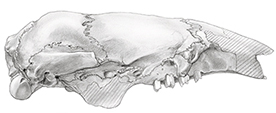
Archivos adicionales
Publicado
Número
Sección
Licencia
Derechos de autor 2020 Publicación Electrónica de la Asociación Paleontológica Argentina

Esta obra está bajo una licencia internacional Creative Commons Atribución-SinDerivadas 4.0.

Los/las autores/as conservan los derechos de autor/a y garantizan a la revista el derecho de ser la primera publicación del trabajo licenciado bajo una licencia CC Attribution-NonCommercial 4.0 que permite a otros/as compartir el trabajo con el reconocimiento de la autoría y de la publicación inicial en esta revista.





